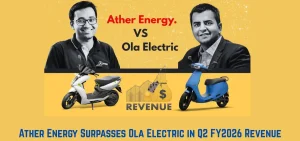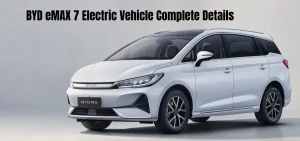Electric Dreams: The Untold Story of the First Electric Car
When we think of electric vehicles (EVs), sleek modern cars like Teslas often come to mind—but would you know that the first electric car was invented over a century ago? Long before gas-powered engines dominated the roads, electric cars were already quietly revolutionizing transportation. In fact, in the early 1900s, electric vehicles outsold their gasoline counterparts and were favored for their silent operation and ease of use. So, what happened? Why did EVs disappear for decades, only to make a powerful comeback in the 21st century? This forgotten chapter in automotive history is filled with innovation, mystery, and surprising twists. Buckle up as we take a fascinating ride through time, exploring the rise, fall, and rebirth of electric cars—from their early glory days to today’s high-tech marvels. The truth about the world’s first electric car might just shock you… and it’s only the beginning of the journey!
The Early Rise and Fall of the Electric Car
The history of electric cars dates back to the 1830s when Robert Anderson of Scotland built the first motorized carriage between 1832 and 1839. However, it used non-rechargeable batteries, making it impractical for transportation.
In 1837, another Scottish inventor, Robert Davidson, developed an electric locomotive. By 1841, he built an improved version named Galvani, which could tow six tons at 4 mph for 1.5 miles before requiring a battery replacement. Fearing job losses, railway workers destroyed his invention.
The invention of rechargeable batteries in 1859 revolutionized electric vehicle development. By 1884, British inventor Thomas Parker introduced electric-powered trams and created prototype electric cars.
In 1890, William Morrison, a Scotland-born chemist in the U.S., built an electric carriage that appeared in an 1888 Des Moines parade. It had front-wheel drive, 4 horsepower, and a 20 mph top speed, running 50 miles per charge with 24 battery cells. Morrison’s invention gained massive attention at the 1893 Chicago World’s Fair, inspiring further innovations. Electric cars have come a long way, evolving into today’s efficient, sustainable vehicles.
In the early 1900s, transportation was undergoing a major transformation. While horses remained the primary mode of travel, new motor vehicles—powered by steam, gasoline, and electricity—emerged. Among them, electric cars gained immense popularity due to their convenience.
Why Have Electric Cars Become Popular?
- Ease of Use: Unlike gasoline cars, electric vehicles (EVs) were quiet, easy to drive, and required no manual gear shifting or hand cranking.
- No Pollution: Unlike steam and gasoline-powered cars, EVs do not emit smoke or unpleasant fumes.
- Ideal for Urban Travel: Poor road conditions limit long-distance travel, making EVs perfect for short city commutes.
- Famous Innovators Supported EVs: Ferdinand Porsche developed the first hybrid electric car in 1898, and Thomas Edison worked on advanced EV batteries. Even Henry Ford explored affordable electric car options with Edison in 1914.
The Decline of Electric Vehicles
Despite their early success, electric cars faced a decline due to:
- Ford’s Model T (1908): Mass production made gasoline cars cheaper. By 1912, a gasoline car cost $650, while an electric roadster was priced at $1,750.
- Electric Starter (1912): Charles Kettering’s invention eliminated the need for manual cranking, making gasoline cars easier to operate.
- Better Roads & Cheap Gas: By the 1920s, improved road networks encouraged long-distance travel, and cheap Texas crude oil made gasoline more affordable.
- Limited Electricity Access: Rural areas lacked electricity, making gasoline cars more practical.
By 1935, electric vehicles had almost disappeared. However, their story did not end there—today, advancements in battery technology and environmental awareness are driving a strong comeback for electric cars.
The History of Electric Cars Includes Many Names You Know
The late 19th and early 20th centuries were a hotbed of automotive innovation worldwide. At the time, automobiles were primarily luxury items for the wealthy, with steam-powered vehicles leading the industry. Electric and gasoline-powered cars lagged, though some well-known brands experimented with electric models.

Ransom Eli Olds initially produced a small number of electric horseless carriages before launching mass-market Oldsmobile vehicles. One of his rare electric models still exists in a Lansing, Michigan museum, the city that became Oldsmobile’s headquarters after a fire destroyed his Detroit factory. While Olds did not produce electric cars in Lansing, General Motors revisited the concept nearly a century later.
Another unique electric vehicle from this era was the Egger-Lohner C.2 Phaeton, created by a young Ferdinand Porsche in 1898. This early design featured an electric drive system weighing 286 pounds, delivering 5 horsepower, and reaching speeds of 22 mph. Despite its modest specifications, the car won a 25-mile electric vehicle race in Berlin in 1899.
Studebaker, known for building wagons and carriages, entered the automobile industry with electric cars. Thomas Edison owned a 1902 Studebaker Electric, and he, alongside Henry Ford, even developed an electric car prototype. However, they ultimately favored gasoline engines due to limited electricity availability outside cities and the practicality of carrying extra fuel on long trips.
1. Electric Vehicles in the 18th to 19th Century
- Gustave Trouve’s electric vehicle (1881) was the world’s first publicly presented full-scale electric car powered by an improved Siemens motor.
- The Electromote, the world’s first trolleybus by Werner von Siemens, Berlin 1882.
- The Flocken Elektrowagen (1888) was the first four-wheeled electric car in the world.
- La Jamais Contente was the first road vehicle to go over 100 kilometres per hour (62 mph). It was a Belgian electric vehicle with a light-alloy torpedo-shaped bodywork and batteries. The high position of the driver and the exposed chassis underneath spoiled much of the aerodynamics. The light alloy, called partinium, is a mixture of aluminium, tungsten, and magnesium.
- The Lunar Roving Vehicle (LRV) is a battery-powered, four-wheeled rover used on the Moon in the last three missions of the American Apollo program (15, 16, and 17) during 1971 and 1972. It is popularly called the Moon buggy, a play on the term “dune buggy”.Built by Boeing, each LRV has a mass of 462 pounds (210 kg) without payload. It could carry a maximum payload of 970 pounds (440 kg), including two astronauts, equipment, and cargo such as lunar samples, and was designed for a top speed of 6 miles per hour (9.7 km/h), although it achieved a top speed of 11.2 miles per hour (18.0 km/h) on its last mission, Apollo 17.
- The General Motors EV1, one of the cars introduced due to a California Air Resources Board (CARB) mandate, had a range of 260 km (160 miles) with NiMH batteries in 1999.
2. Pioneers in the Electric Car Industry
- Ransom Eli Olds: He created early electric horseless carriages before founding Oldsmobile.
- Ferdinand Porsche: Designed the Egger-Lohner C.2 Phaeton in 1898, featuring a 5-horsepower electric motor.
- Studebaker: Transitioned from manufacturing horse-drawn carriages to electric vehicles.
- Thomas Edison & Henry Ford Experimented with electric prototypes but opted for gasoline-powered vehicles due to infrastructure limitations.
3. Early Challenges and Infrastructure Limitations
- Limited electricity availability outside cities.
- Heavy batteries compared to gasoline storage.
Electric Vehicles in the Early 20th Century
1. First Presidential Experience with Electric Cars
- William McKinley (1901): Transported in an electric-powered ambulance.
- Theodore Roosevelt (1902): First public ride in a Columbia electric vehicle.
2. Detroit Electric and Market Struggles
- Founded in 1907, Detroit Electric competed against Baker and Milburn.
- Silent operation and ease of use made electric cars popular among urban women.
- The affordability of the Ford Model T ($850 in 1908, under $300 by 1923) made gasoline cars more accessible.
3. Innovation and Decline of Early Electric Cars
- The electric starter (1912 Cadillac) eliminated hand-cranking, making operating gasoline cars easier.
- The high cost of battery packs (e.g., Edison’s nickel-iron battery costing $600) limited electric vehicle adoption.
- Detroit Electric continued production until 1939, manufacturing over 35,000 cars.
Mid-20th Century: The Rise and Fall of Electric Vehicles
1. Post-WWII Use of Electric Vehicles
- Milk Floats in the UK: Used for home deliveries until the 1980s.
- Japan’s 1947 Tama Electric Car: Produced due to gasoline shortages, featuring a 40-mile range and 20 mph top speed.
2. General Motors’ Electric Experiments
- Electrovair II (1966): Corvair-based EV with 115-hp AC induction motor, but impractical due to battery costs.
- Delta Experimental Car (1967): A General Electric prototype proving that viable electric cars required better batteries.
3. Electric Cars in Space Exploration
- Lunar Roving Vehicle (1971): Designed for NASA, featuring four electric motors and non-rechargeable batteries.
- It cost $38 million and was used on the Apollo 15, 16, and 17 missions.
Late 20th Century: The Push for Electric Cars
1. General Motors’ Efforts in the 1970s
- Electrovette (1977): A Chevrolet Chevette converted to electric power, with a 50-mile range at 30 mph.
- Abandoned after oil prices stabilized post-OPEC crisis.
2. GM’s EV1 (1996-2003)
- Developed due to California’s zero-emission mandate.
- Advanced lead-acid batteries with a later nickel-metal-hydride upgrade.
- Limited adoption; GM eventually recalled and destroyed most units.
3. Emergence of Electric Sports Cars
- AC Propulsion’s tzero (1997): A lightweight, high-performance electric sports car.
- Tesla Motors (2003): Founded by Martin Eberhard and Marc Tarpenning, building on the Tzero concept.
21st Century: The Modern Electric Revolution
1. Tesla’s Pioneering Role
- Tesla Roadster (2008): First production EV with a lithium-ion battery, 200-mile range, and high performance.
- Tesla Model S (2012): A luxury electric sedan with over 300 miles of range, revolutionizing consumer perception.
- Tesla Model 3 (2017): An Affordable long-range EV, becoming one of the best-selling electric cars.
2. Other Notable EV Developments
- Nissan Leaf (2011): One of the first mass-produced EVs with global availability.
- Chevrolet Bolt (2017): An Affordable EV with over 200 miles of range.
3. Expansion of Charging Infrastructure
- Tesla Supercharger Network: Enabling long-distance EV travel.
- Government Incentives: Policies worldwide promoting EV adoption.
The Future of Electric Cars
1. Breakthroughs in Battery Technology
- Advances in solid-state and lithium-ion batteries for higher efficiency.
- Faster charging and increased energy density.
2. Autonomous and Connected EVs
- Integration of AI-driven autonomous driving.
- Smart grid and V2G (vehicle-to-grid) technology.
3. Global EV Adoption Trends
- Increased production by traditional automakers.
- Governments should set deadlines for banning internal combustion engine sales.
Conclusion: The Final Words
In conclusion, the journey of the electric vehicle is a fascinating ride through innovation, ambition, and rediscovery. From the humble beginnings of the first electric car in the 19th century to the modern-day EV revolution, the path has been anything but straightforward. Early electric cars once dominated the roads, only to be overshadowed by gasoline-powered vehicles—yet their comeback in the 21st century proves that clean, sustainable transportation is no longer just a dream. Today’s advanced EVs owe much to the pioneers who dared to challenge the norms of their time. As we move toward a greener future, it’s essential to recognize the roots of electric mobility and appreciate how far we’ve come. The history of EVs isn’t just about cars—it’s a testament to human innovation, resilience, and the ongoing quest for a better planet. The electric car’s story is far from over—it’s just shifting into high gear.
Related Articles:-





